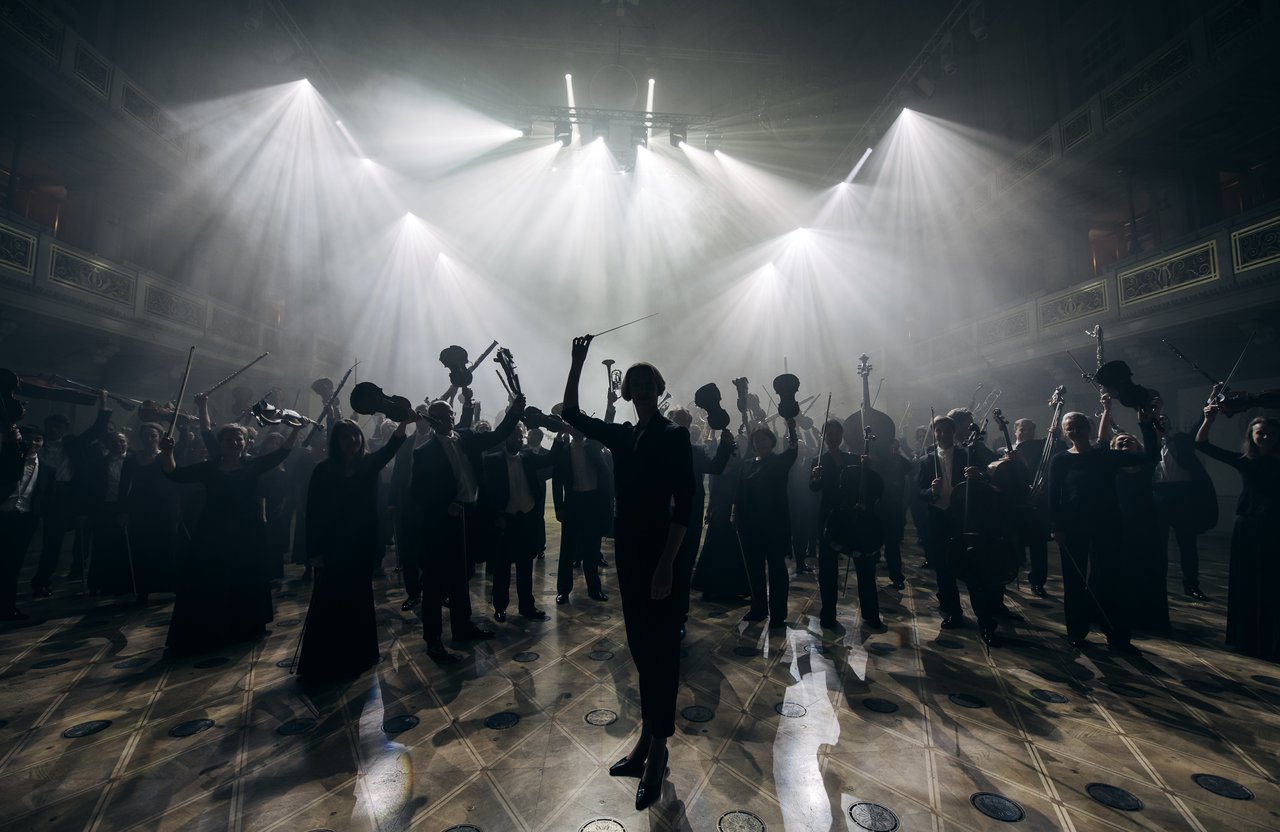16.00 Uhr
Neujahrskonzert
 Konzerthausorchester & Joana Mallwitz © Simon Pauly
Konzerthausorchester & Joana Mallwitz © Simon Pauly
Mozart put his First on paper when he was eight. Brahms heard all too clearly the "giant Beethoven marching behind" him and therefore was 43 at his symphonic premiere. Shostakovich's went from being an exam paper to a world success, Rachmaninoff's failed and cost him peace of mind and countless hours of therapy.
Fortunately, Sergei Prokofiev's first symphonic work did not result in such a life crisis, although his terse, light-heartedly ironic "Symphonie classique" was premiered in 1918 without much of an echo. At least it gave him the opportunity to travel abroad.
For the young Kurt Weill, his very short, single-movement First probably did not give him to many sleepless nights either: The 21-year-old student in Busoni's masterclass for composition soon devoted himself to other compositions in the exciting Berlin of the 1920s, and the youthful work with its revolutionary pathos disappeared unpremiered into obscurity until 1958.
Gustav Mahler recorded in a letter that his First in 1888 flowed out of him "like a mountain stream" during six weeks in spring. However, parts of the material had been occupying him for four years before that, and afterwards, the question of how much programmatic guidance the initially rather uncomprehending audience should have was far from over for him. In 1893, Mahler conducted a fundamentally revised version, and in 1909 he was still fine-tuning individual orchestral parts.
Prokofiev wrote with dry understatement that his First was "not so much symphonic, but a symphony all the same". And he seems to have taken great pleasure in writing the work, which plays with Haydn's and Mozart's compositional style, in the revolutionary summer of 1917 on a farm near St. Petersburg, without a piano and exceptionally well supplied with provisions. It was no less cheerful for him to imagine in his diary how the musical-academic dignitaries would react to the label "classical", which seems so harmless today, in view of the "dirty Prokofiev dissonances". There is not a single minor chord in the last movement, which "possibly borders on outrageous irresponsibility". So much lightness should remain an exception anyway, unfortunately. Leonard Bernstein, at any rate, recalls in "Humour in Music" how he first heard the symphony on the radio as a 15-year-old: "I lay on the floor and laughed until I cried." Quite a recommendation!
It is thanks to Kurt Weill's muse and wife of two marriages, the singer and actress Lotte Lenya, that today we can hear a Berlin symphony alongside all the other symphonies with cities in their names, from Prague to Paris to London. She searched for the lost score in a Tagesspiegel advertisement. In 1957 it turned up in an Italian monastery, and the following year Weill's Symphony No. 1 was premiered. Our author Michael Kube characterises it as follows: "The supporting element of the composition are the broad, spiralling chords that recur several times as a formal anchor. They provide space for motivically as well as contrapuntally developed sections. Sometimes lyrical and rapturous, sometimes march-like and stomping, they build an expressionistic Gestalt in a very sovereign way.
"What I have set down in it is what I have experienced and learned. Truth and poetry in tones," Gustav Mahler wrote about his First. He wanted to express something universal. And to be understood. That is why he did not make it easy for himself to soften the polarisation into "Mahler-friends and Mahler-haters" observed by Karl Krauss in Vienna. But even the poetic explanation of the symphony movements that well-meaning friends suggested to him did not help much. So after a very short time, he deleted them again - as well as the overall title of the First, "The Titan". And a second movement called "Blumine", which pretty much every solo trumpet in the world might mourn.
Strictly speaking, one should forget everything Mahler came up with programmatically. And just listen to how this work, which already sounds typically like its creator, gradually unfolds, complete with awakening sounds of nature, instrumental quotations from "Wunderhorn" songs, brass bands at the tipping point and an eerie sounding double bass solo in the Funeral March. But...
... but a glance at the whimsical procession of forest animals carrying a hunter to his grave certainly does no harm. Mahler wrote about the third movement, then entitled "Stranded": "The author received the external inspiration for this piece of music from the parodic picture 'Des Jägers Leichenbegängniss' (The Hunter's Funeral) from an old children's fairy tale book, which is well-known to all children in Austria: the animals of the forest escort the coffin of the dead hunter to the grave, hares carry the little flag, a band of Bohemian musicians leads the way, accompanied by music-making cats, toads, crows, etc., and deer, roe deer, foxes and other feathered animals of the forest carry the hunter to the grave, and deer, roes, foxes and other four-legged and feathered animals of the forest escort the procession in hilarious positions. At this point, this piece is intended as an expression of a mood that is sometimes ironic, sometimes broodingly sinister."
